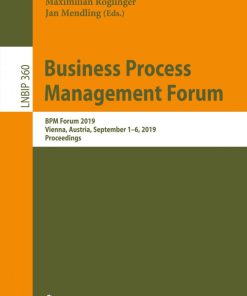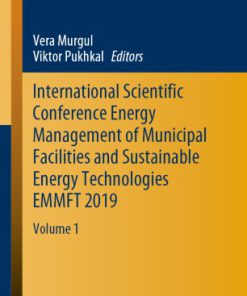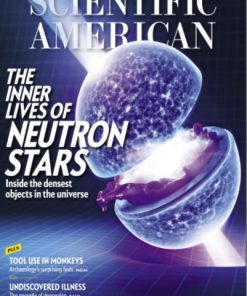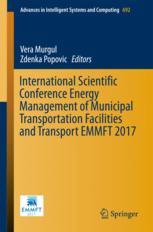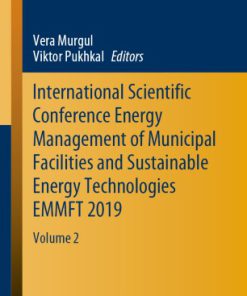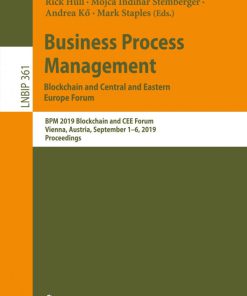VIII International Scientific Siberian Transport Forum TransSiberia 2019 Volume 2 1st edition by Zdenka Popovic 3030379193 9783030379193
$50.00 Original price was: $50.00.$25.00Current price is: $25.00.
VIII International Scientific Siberian Transport Forum TransSiberia 2019 Volume 2 1st edition by Zdenka Popovic – Ebook PDF Instant Download/DeliveryISBN: 3030379193, 9783030379193
Full download VIII International Scientific Siberian Transport Forum TransSiberia 2019 Volume 2 1st edition after payment.
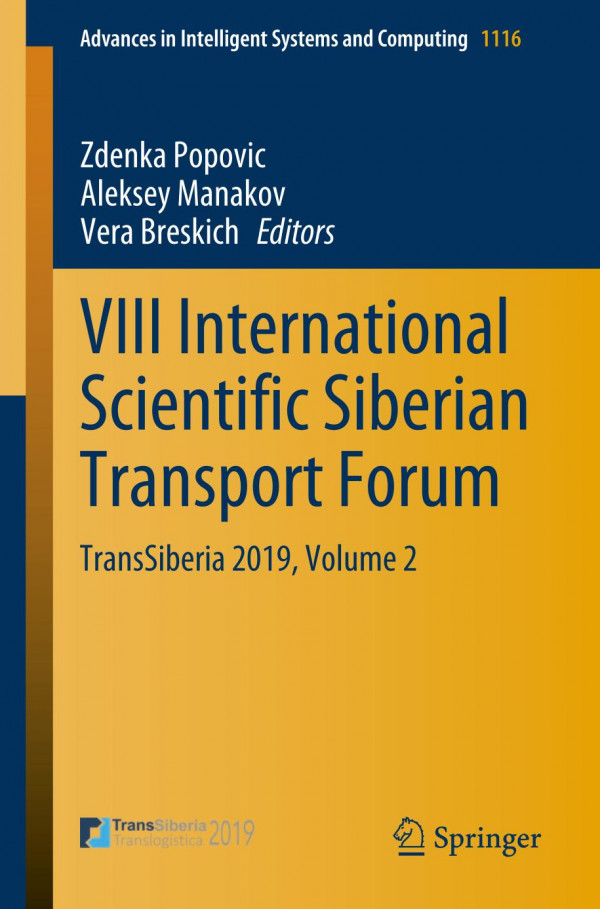
Product details:
ISBN-10 : 3030379193
ISBN-13 : 9783030379193
Author: Zdenka Popovic
This book presents the findings of scientific studies on the successful operation of complex transport infrastructures in regions with extreme climatic and geographical conditions. It features the proceedings of the VIII International Scientific Siberian Transport Forum, TransSiberia 2019, which was held in Novosibirsk, Russia, on May 22–27, 2019. The book discusses improving energy efficiency in the transportation sector and the use of artificial intelligence in transport, highlighting a range of topics, such as freight and logistics, freeway traffic modelling and control, intelligent transport systems and smart mobility, transport data and transport models, highway and railway construction and trucking on the Siberian ice roads. Consisting of 214 high-quality papers on a wide range of issues, these proceedings appeal to scientists, engineers, managers in the transport sector, and anyone involved in the construction and operation of transport infrastructure facilities.
VIII International Scientific Siberian Transport Forum TransSiberia 2019 Volume 2 1st table of contents:
- Bridges, Roads, Tunnels, Construction of Transport Infrastructure Facilities
- Wide Span Segmented Precast Concrete Girders
- Early Cost Estimates of Bridge Structures Aided by Artificial Neural Networks
- The Study of the Effect of Heat Mains Laid in the Automobile Road Embankment Pavement on Its Base
- Application of RFID Technology on Construction Site – Case Study
- Nature of Seismic Hazard of Mainlines’ Functioning in the Conditions of Sredneamurskaya Lowland North Offset
- Soil Research for Strengthening Railroad Bed Design in Cold Regions of Far East
- New Designs of Drainage and Discharge Facilities for Dewatering Endorheic Sections in Cold Regions
- Asphalt Concrete Mix Temperature Change Dynamics During Compaction
- Geodetic Monitoring for the Construction of Railway Bridge Piles
- Improvement of the Calculation of the Floating Bridge Hinge System of the Two Supporting Ferry
- Measurement Method of the Reflected from Highways Noise in Urban Buildings
- Sandwich Belt High-Angle Conveyors in Solving the Transportation Problems of Deep Open Pits
- Service-Life Evaluation of Reinforced Concrete Sleepers Under Various Working Conditions
- Porosity and Strength of Limestone Treated with Stone-Strengthening Composition
- Artificial Intelligence for Managing Small Hydro Power Plants in Southern Regions of Siberia
- Justifying and Opting Lightweight Railway Superstructure
- Switching Shunters on a Slab Base
- Research of the Stress-Strain State of the Building Foundation Artificial Basis on the Weak Soils of Sakhalin Island
- Automation of Railroad Construction Technology Using Surveying Methods
- Perspective Constructions of Bridge Crossings on Transport Lines
- Method for Detecting Fatigue Damage to Bridges by Analyzing Dissipative Processes in Metals Under Periodic Loading
- Stability of the Supporting Subgrade on the Tracks with Heavy Train Movement
- Measurement Method of Non-continuous Noise in Industrial Buildings of Railway Enterprises
- Operational Reliability and Durability of Roads with Cement Concrete Coatings
- Physical and Mechanical Characteristics of Soil Within the Culvert Pipes Location of Roads
- Influence of Temperature and Soil Thermal Expansion on Cracking of Dirt Road Surface During Seasonal Freezing
- Dependence of Trapping Nets’ Protective Properties on Structural Layout
- Capture of Large Objects by the Earthmoving Machine’s Implement During Operation on Motor and Toting Roads
- Method for Estimating Tensile Stresses and Elastic Modulus of Frozen Soil with Evolving Crack
- Finishing Coatings Based on Modified Cement Colloidal Systems
- Strengthening of Concrete Composites Using Polycarboxylate and Aluminosilicate Materials
- Bending and Eccentrically Compressed Reinforced Concrete Structures at Low and Freeze-Thaw Temperatures
- Information Model of Multivariate Technological Design of Earthworks
- Typology of Passenger Railway Stations in the Late 19th – Early 20th Centuries (Russian Experience)
- Development of a Control System for the Transportation of Asphalt Mix with the Maintenance of the Required Temperature
- Fire Simulation of Bearing Structures for Natural Gas Module Plant
- Choosing Methods for Manufacture of Reinforced Concrete Frames Based on Solution of Optimisation Problems
- Method of Evaluation of Historical Objects of Transport Infrastructure Deformations
- The Rock Loosening Technology in Railway Track Reconstruction
- Mathematical Methods for Optimizing the Technologies of Building Materials
- Current State of Intellectual Property Management and Innovational Development of the Russia
- Boundary Layer of the Wall Temperature Field
- Calculation and Strengthening of Reinforced Concrete Floor Slab by Composite Materials
- State and Prospects of Development of Self-regulation in Construction Industry of Russia
- Study of Deformation of Structural Elements as Result of Concrete Creep
- The Influence of Green Roofs on a Humanitarian Balance of the Biotechnosphere
- The Influence of Polyethylene Additives on Asphalt Pavement Properties
- Identifying the Positioning Systems in Conditions of Insufficient Primary Measurement Information
- Algorithmic and Software Optimization Approach for Diagnosis of High-Precision Positioning Systems
- Study of the Characteristics of Fine Binders for Injection in Construction
- Modification of Polyimide Surface in Multilayer Structures for Architectural Films by Plasmochemical Treatment
- Effect of Additives on the Properties of Fine-Grained Concrete
- Selection of the Variant of the Aluminium-Glass Facade Implementation Using the AHP Method
- Development of Polymer Composite Facing Material Using Anthropogenic Waste
- Development of Facade Facing Ceramics with Self-Glazing Effect and Increased Energy Efficiency
- Experimental Research of the Strength of Compressed Concrete Filled Steel Tube Elements
- Exploitation Characteristics of the Constructions of Transport Buildings and Structures Under Dynamic Loads
- Transport Management, Intelligent Transport Systems
- Assessment of Media-Forming Potential of the Territory in the Implementation of the Lands
- Urban Transport and Logistics Infrastructure as an Element of Economic Security in the Region
- Comparative Risk Analysis of Using the Markings for Ground and Raised Pedestrian Crossings
- Features of Personnel Reproduction in the Transport Industry
- Fuzzy Set Theory for Planning the Operation of a Motor Transport Enterprise
- Modeling as a Source of Innovation in Design Railway
- Coordination of Parameters of Transportation System Elements
- Integral Evaluation of Business Success: Methodology and Case of Russian SME
- Trends in the Development of Corporate Ethics in the Company “DHL” and JSC “Russian Railways” in the Current Socio-Economic Conditions
- Efficiency of the Production Process of Grinding Rails on the Basis of Optimizing the Periodicity of Works
- Impact of the Use of Intellectual Assets on the Economic Growth of Russian Railways
- Bases of the Methodology of Monitoring the Impact of the Human Factor on the Reliability of the Railway Infrastructure
- Lean Transportation in Science is no Longer “Terra Incognita”
- Economic and Investment Fields of Railroad Sections and Stations
- Public Finance Policy for the Development of the Transport Industry
- The Multi-level Model of the Service Enterprises Human Capital Value
- Structural Diagram of an Automated System of Material Moisture Content Control
- Mathematical Modeling of Gas and Water Cone Formation at an Oil Well
- Decision Support System for Road Transport Management in the Digital Age
- Economic and Mathematical Evaluation Model of Interaction Between Container Transportation System and Russian Regions
- Algorithmization of Decision-Making in the Construction of Logical Structures of Databases of Functional Information Systems
- Determination of Factors of Professional Health Risk of Engineering Workers
- Application of Cosinor Analysis for Modeling Time Series of Traffic Accidents
- Economic Optimization and Evolutionary Programming When Using Remote Sensing Data
- Development of the General Structure of the Knowledge Base for Neuro-Fuzzy Models
- Modernization Concept of the Electric Power Industry as the Basis for Ensuring the Economic Growth of the Russian Federation
- Forming Ontologies and Dynamically Configurable Infrastructures at the Stage of Transition to Digital Economy Based on Logistics
- Methodical Apparatus for Selecting the Best Motor Transport Vehicle by the Set of Its Characteristics
- Control of Idle Losses in Power Transformers of Distribution Electric Networks
- Financial Analysis in Budgetary Institutions
- Freight and Logistics, Traffic Modelling
- Modelling the Bottlenecks Interconnection on the City Street Network
- Safe Train Route Options
- Elaboration of Multichannel Data Fusion Algorithms at Marine Monitoring Systems
- Monitoring and Predicting the State of the Road Network in Russia’s Cryolitic Zone
- Capacity and Traffic Management on a Heavy-Traffic Railway Line
- Methods of Rating Assessment for Terminal and Logistics Complexes
- Application of Conditional Spectra for Modeling Noise Propagation Ways
- Method of Two-Factor Analysis of Cars Operation in the Road Transport System of Cargo Transportation
- Analysis and Diagnostics of Competing Transport Processes on the Basis of the Bernstein – Russell – Narinyani Theorem
- Evaluation Model of Interaction Between Container Transport System and Regional Economy
- Organization and Movement of Exit Routes from Empty Cars
- Conditions for Driving of the Connected Trains on the Operating Domain of Far Eastern Railroad
- Reliability of Multimodal Export Transportation of Metallurgical Products
- The Methodology of Calculating Route Network of Long-Distance Passenger Trains in the Conditions of Fluctuating Passenger Flows
- The Optimizing Container Transportation Dynamic Linear Programming Model
- Theoretical and Multiple Model of Transport Multi-operational Reconfigurable Processes
- Optimization of Fleet Size and Structure While Serving Given Freight Flows
- Elaboration of a Model of Integrated Transport Service in the Segment of Freight Transportation
- Analysis of the Error in Determining the Location Inside the Logistics Warehouse Complexes
- Research of the Incoming Traffic Flow at City Intersections on the Suitability of the Use of Adapted Traffic Light Control
- Analytical Model of Commercial Activity of a Transport-Logistics Enterprise
- Improvement of Cargo Transportation Technology in Rail and Sea Traffic
- Main Parameters and Placement of the “Warehouse on Wheels” Terminals of Seaports for Transshipment Coal
- Coordination of Parameters of Transport Elements System in the Conditions of Lack of Traffic and Estimated Capacity
- Construction of Efficient Railway Operating Domains Based on a Simulation Examination
- Logistics Grading of Railroad Stations
- Modeling of a System for Organization of Traffic via a Terminal Network
- A Model of Cluster-Modular Development of Passenger Traffic in the Urals Federal District, Russia
- Dangerous Zone During Transportation of Dangerous Goods by Rail
- Correction to: Asphalt Concrete Mix Temperature Change Dynamics During Compaction
People also search for VIII International Scientific Siberian Transport Forum TransSiberia 2019 Volume 2 1st:
viii–ix
a- viii
scientific 8
a siberian cat
bioscience international 86996
Tags: International, Scientific Siberian, Transport Forum, TransSiberia, Zdenka Popovic
You may also like…
Engineering - Industrial Engineering & Materials Science
Business & Economics - Industries
Computers - Computer Science
Business & Economics - Industries
Mathematics - Probability
High Dimensional Probability VIII: The Oaxaca Volume Nathael Gozlan




